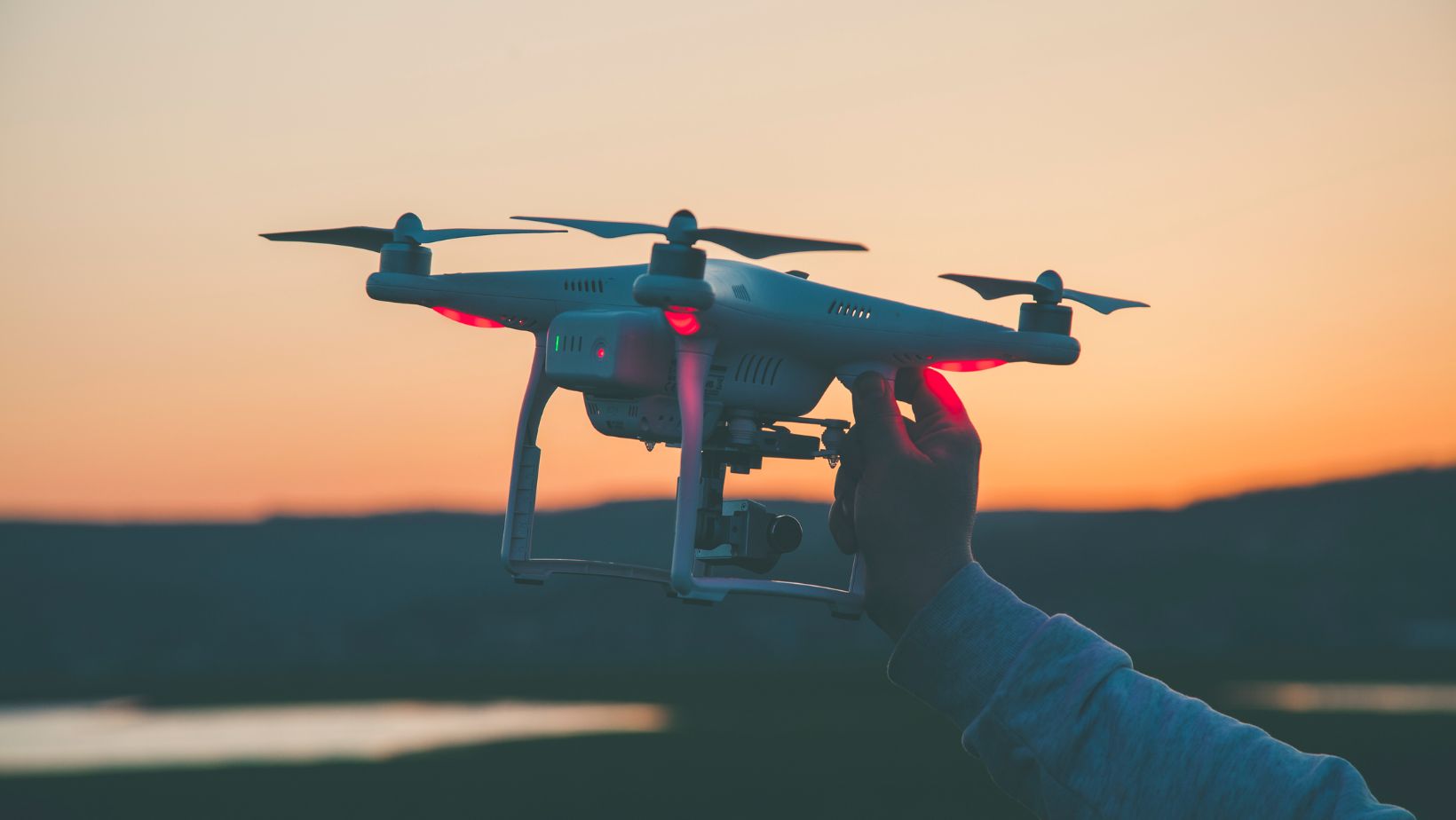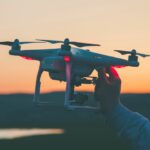
Drones, or unmanned aerial vehicles (UAVs), have become increasingly popular in recent years, with a wide range of uses, from personal photography to package delivery. As the technology continues to develop, the number of drone-related regulations has also increased in an effort to ensure the safety of both drone operators and the general public.
Can i Fly a Drone in my Neighborhood
So, can you fly a drone in your neighborhood? The answer may surprise you – there are actually a number of factors to consider before taking to the skies. In this article, we’ll take a look at some of the key regulations surrounding drones in the United States.
The History of Drones
Drones have been around for centuries, but they were originally used for military purposes. In recent years, however, drones have become more popular for commercial and recreational use. There are regulations in place that govern how and where drones can be flown.
The First Military Drones
The first military drones were used in the Vietnam War. Unmanned aerial vehicles (UAVs) were used to conduct reconnaissance missions and gather intelligence. The U.S. military found that drones could be a valuable asset in war zones, and they began to develop more advanced models for use in other conflicts.

The use of drones has continued to grow in popularity, and they are now being used by militaries around the world. In recent years, there has been an increase in the use of drones for civilian purposes as well. Drones are being used for everything from deliveries to photography.
There are some concerns about the use of drones, particularly when it comes to privacy and safety. There are also regulations that govern the use of drones in certain areas. Before you fly a drone, it’s important to research the laws in your area to make sure you are following all of the regulations.
The Rise of Commercial Drones
With the rapid advancement of technology, drones are becoming more and more accessible to the general public. Once used mostly by the military for surveillance and target practice, drones are now being utilized for a variety of purposes such as search and rescue missions, crop mapping, law enforcement, delivery services, and even personal photography.
As their popularity increases, so do the regulations surrounding their use. Currently in the United States, anyone wishing to operate a drone commercially must obtain a license from the Federal Aviation Administration (FAA). There are also restrictions on where drones can be flown; for example, they are not allowed within 5 miles of an airport without prior approval from air traffic control.
Despite these regulations, there is still a lot of confusion about where and how drones can be flown. This has led to some people operating them illegally, which has resulted in accidents and property damage. In order to ensure safety and avoid potential legal issues, it is important to familiarize yourself with the laws surrounding drone use before taking to the skies.
The Current State of Drone Regulations
Drones have been subject to a lot of regulation in recent years. In the United States, the Federal Aviation Administration (FAA) is the main regulatory body for drones. The FAA has put in place a number of rules and regulations surrounding drones.
FAA Regulations
In the United States, the Federal Aviation Administration (FAA) is responsible for regulating the use of drones. The agency has put in place a number of regulations that drone users must follow, and it is important to be familiar with these regulations before operating a drone.

One of the most important regulations is that drones must not be flown in a way that endangers the safety of other aircraft. This means that drones should not be flown near airports or other areas where there is a lot of air traffic. Additionally, drones should not be flown near people or animals, as they could potentially cause injury if they crashed.
Another important regulation is that drones must not be flown above 400 feet. This is to ensure that they do not interfere with commercial aircraft operations. Additionally, drones must not be flown at night, as this can also pose a safety risk.
The FAA has also put in place a number of restrictions on where drones can be operated. For example, drones are not allowed to be flown over heavily populated areas such as cities and towns. Additionally, drones are not allowed to be flown nearsensitive areas such as power plants and government buildings.
Operating a drone in compliance with all of these regulations can be challenging, but it is important to do so in order to ensure the safety of others and avoid penalties from the FAA.
State and Local Regulations
At the state and local level, there has been a patchwork of drone regulations that have emerged in recent years. Some states, such as California, have enacted relatively comprehensive drone laws, while others have taken a more hands-off approach. In general, however, most states have adopted some form of regulation surrounding the use of drones.
One of the key areas of concern for many states has been the issue of privacy. Given the fact that drones can be equipped with cameras and other sensors that can gather detailed information about individuals and their activities, there has been a heightened concern about how this data will be used and who will have access to it. As a result, many states have enacted laws that restrict the use of drones in certain situations where there is a reasonable expectation of privacy, such as near homes or schools.
Another key area of concern for many states relates to the safety of drone operations. Given the fact that drones are increasingly being operated in close proximity to people and property, there is a heightened risk of accidents or collisions occurring. As a result, many states have enacted laws that place restrictions on where and how drones can be flown. For example, some laws prohibit flying drones over populated areas or near airports.
At present, the federal government does not have any comprehensive regulations in place regarding the use of drones. However, the Federal Aviation Administration (FAA) does have some limited rules that apply to drone operations in certain situations. For example, the FAA requires that all drones be registered with the agency before they can be flown in U.S. airspace. Additionally, the FAA has established some airspace restrictions around airports and other sensitive locations.
The Future of Drone Regulations
As the use of drones become more popular, there is an increasing concern for the regulation of these devices. There are many questions still unanswered such as where can drones be flown and who is responsible if a drone damages property or injures someone. In this heading, we will explore the current regulations surrounding drones as well as the future of drone regulations.
The Impact of 5G on Drones
The next generation of wireless technology, 5G, will have a profound impact on drones. The increased bandwidth and speed of 5G will enable new capabilities for drones, including beyond visual line of sight (BVLOS) flight and real-time streaming of high-definition video. In addition, the lower latency of 5G will make it possible for drones to react more quickly to their surroundings, making them safer to operate.
However, the rollout of 5G is still in its early stages, and it will take some time for the technology to be widely available. In the meantime, there are a number of steps that drone operators can take to prepare for the transition to 5G. One is to ensure that their drone fleet is compatible with 5G networks. Another is to begin testing and experimenting with drones equipped with 5G radios. Doing so will help operators gain a better understanding of the potential benefits and applications of 5G drone technology.
The Rise of Drone Delivery
Looking to the future, it’s likely that we’ll see an increase in the use of drones for delivery purposes. Companies like Amazon and UPS are already testing out drone delivery methods, and it’s only a matter of time before this becomes more widespread. With that said, there will need to be some regulations in place in order to ensure safety and privacy. For example, there will need to be designated areas for drones to take off and land, and there will need to be rules surrounding how close they can fly to homes and businesses. It will be interesting to see how all of this unfolds in the coming years.
Conclusion
To answer the question posed in the title, the regulations surrounding drones are still evolving and there is no definitive answer at this time. It is advisable to check with local authorities before flying a drone in any populated area.




